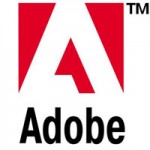 San Francisco — It is not surprising to see something new originating from Google, which has finally rolled out after years of development under the codename “Walkabout,” Google Wave, which combines the company’s popular services from across the web and provides instant communication in multiple forms, including e-mail, instant messaging, blogs, wikis and other tools — simply redefining online communication.
San Francisco — It is not surprising to see something new originating from Google, which has finally rolled out after years of development under the codename “Walkabout,” Google Wave, which combines the company’s popular services from across the web and provides instant communication in multiple forms, including e-mail, instant messaging, blogs, wikis and other tools — simply redefining online communication.
Google last week released Wave, its new communications platform that combines different methods of connecting — such as instant messaging, email, wikis, photo-sharing and document-sharing — and combines them all on a single, browser-based plate.
The Google Wave site is now live, although access to the application will be restricted, is the brainchild of same developers who gave you Google Maps team, led by Lars Rasmussen and his brother Jens.
If it pulls the crowd, Wave could appeal to business users as well as social networkers.
The Wave swept over the crowd last week at Google’s I/O developer conference in San Francisco, which reportedly gave it a standing ovation. That is not surprising, given that lead software engineers Lars and Jens Rasmussen said the application is open source, which means developers will get a chance to tinker with it before its release later this year.

Analyzing from some early tech press/blogger reaction, as well as an early thumbs-up from the development community, Google Wave may indeed have the ability to take on not only the most popular office applications, but also the hottest social networks.
“One of the best times of my life was in 2005, just after the launch of Google Maps, when developers started doing crazy things with the APIs,” Rasmussen said, adding that he hopes developers will do the same with Wave.
At an entry level, Wave is part chat room, part collaborative document. With Wave, a business large or small can possibly function under one roof and onto one platform all of its office applications: A place where people can communicate and work together with richly formatted text, photos, videos, maps and more, Rasmussen wrote in a posting on the official Google blog.
“In Google Wave you create a wave and add people to it. Everyone on your wave can use richly formatted text, photos, gadgets and even feeds from other sources on the Web. They can insert a reply or edit the wave directly. Its concurrent rich-text editing, where you see on your screen nearly instantly what your fellow collaborators are typing in your wave. That means Google Wave is just as well suited for quick messages as for persistent content — it allows for both collaboration and communication.”
“It is a killer app,” he said. “The most exciting thing is that it is browser-based. You do not have to download multiple clients and all the other software we have had to install and upgrade and pay for each year.”
“Google for a long time has needed a really sexy social product,” IDC social media analyst Caroline Dangson said. “If this is not it, I do not know what is.”
Wave, she said, could be the “next generation of communication,” in that it sweeps across all platforms, including mobile, and adds value to now-traditional forms of conversations, such as email.
In fact, Google executives have combined the instant-message/e-mail model to real-time document collaboration, even search, and extended it to the Web and to blogs.
“It is centralized, which is what people kind of want and what Facebook was starting to do: to become this hub or central place to check activity even though it is occurring all over the Web,” Dangson said in a statement. “It is giving users more control in how they communicate and where they communicate.”
In an astonishing demonstration at the last moment, adding a robot called Rosie allowed real-time translation, character by character. That concluding demonstration earned Rasmussen and Stephanie Hannon, the project manager, a standing ovation from the assembled developers.
Here is an explanation of the concept behind Wave via the Google YouTube channel:


